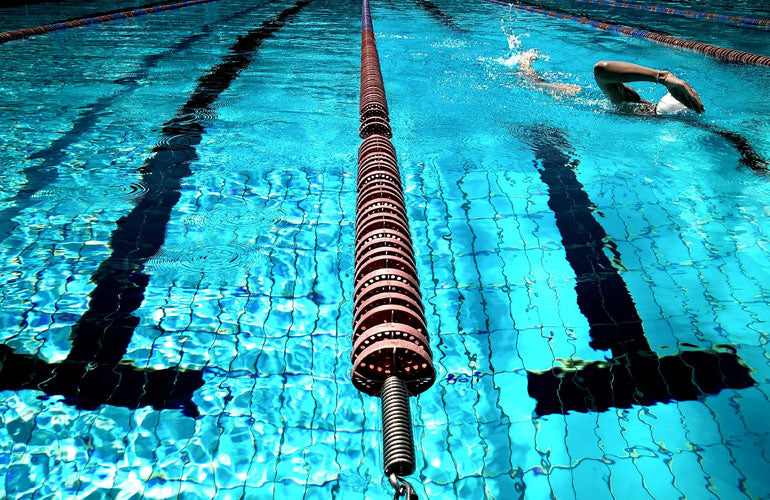As you can probably imagine, pools can be breeding grounds for bacteria if they are not properly maintained. While this might sound disconcerting, it’s important to understand how pools should be looked after in order to minimise this problem. There are of course many factors at play, such as the use of the pool. If you are lucky enough to have your own then this is the ideal scenario as it will just be you and your family using it!

Like most of us though, if you use a public pool - be it at a gym or local baths - then there will be many people entering that water daily. Again, this isn’t a bad thing so long as the pool is properly cleaned, something we’ll cover in more detail below.
Are Public Swimming Pools Clean?
There are a few different ways you can determine how clean your local public pool is before you immerse yourself in its waters. Below are four of the key tips to consider when assuming how clean your local swimming pool really is…
Pay Attention to Small Details
The first is to pay attention to the details. By this we mean the tiles should be free from scum. Dirt in the grouting, or damage to any of the tiles, would indicate that maintenance teams aren’t exactly attentive.
The changing rooms and grids beneath the showers should also be clean, and ideally, there should be a sign on the doors that outlines the timeframes in which the areas are last checked/cleaned. This might sound very nit-picky, but the devil really is in the detail. A place that ensures cleanliness down to this level gives confidence that they do the rest of the cleaning procedures to an equally high standard.
Are there Adults-only Pools?
Many public swimming baths have adult-only pools – this means that children, babies and swimming classes take place in other pools. This can reduce and mitigate the chances of bacteria increasing in the adult-only pool. We aren’t saying it’s a silver bullet, but the transmission of bugs and viruses from children entering the same waters will be minimised.
It’s also safe to assume that children are more likely to wee in a swimming pool than adults. Of course, the chlorine will clean this up, but the less the better!
Shower Facilities Should Be Everywhere
Not only should there be showers in the changing rooms, but poolside showers are also a great sign that a pool area is well maintained. If there are surrounding facilities such as saunas, steam rooms and solariums, having showers nearby will ensure people are rinsing themselves before they re-enter the water.
If the showers were isolated to the changing rooms only, then the chances of people just skipping a rinse are increased, which only means one thing. A dirtier pool.
Pool Cleaning Teams Should be Seen Frequently
There should be a good presence of cleaning teams at any given public pool. Whether you see them scrubbing down the shower areas, or using a net to scoop out debris from the water, they should be around a lot. If there is a tarp pool cover rolled up above it, that is also a good sign, as it means they cover the water every evening after the gym closes, which will also reduce pollution (especially important if it is an outdoor pool).

Another thing to note is if there is an excessive smell of chlorine. This isn’t a good sign believe it or not, as this means that you are actually smelling something called chloramines. These can have negative health effects and the less a pool smells of chlorinated chemicals the healthier they actually are.
So there you have it. Ultimately pools can get a bad reputation for being unhygienic, but it’s important to consider all the factors before just turning away. Chlorine has been a hygiene game changer for many years now, and pool filtering systems are constantly improving, which makes for a cleaner pool to enjoy. Remember, swimming as an exercise is full body and low impact, making it a truly exceptional way to burn lots of calories.

